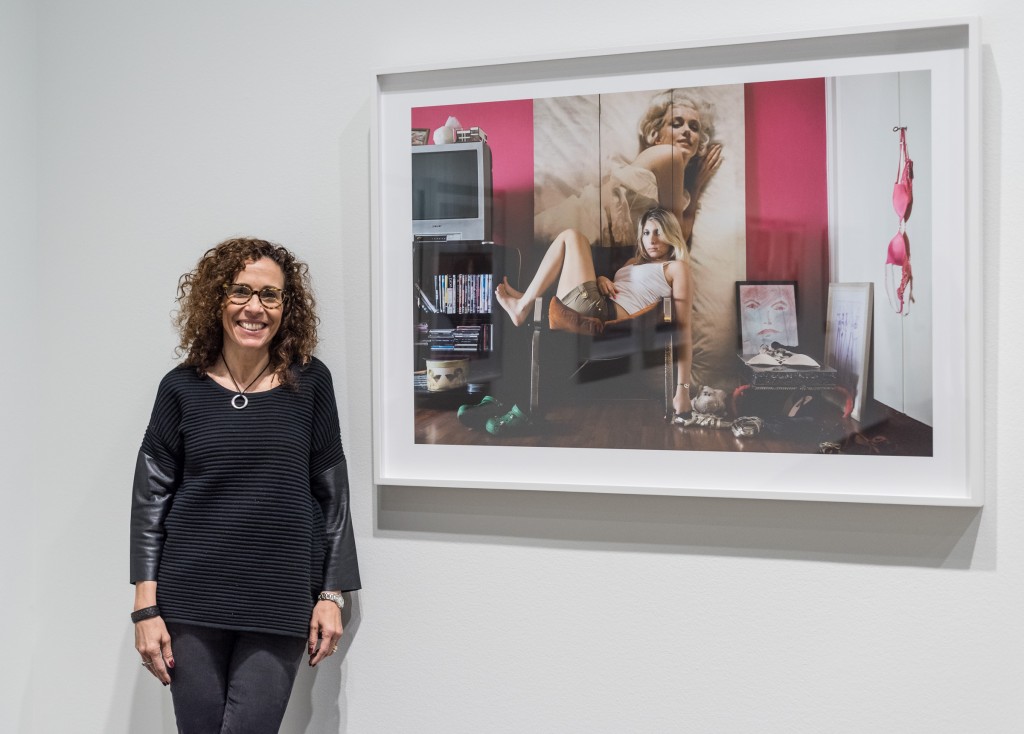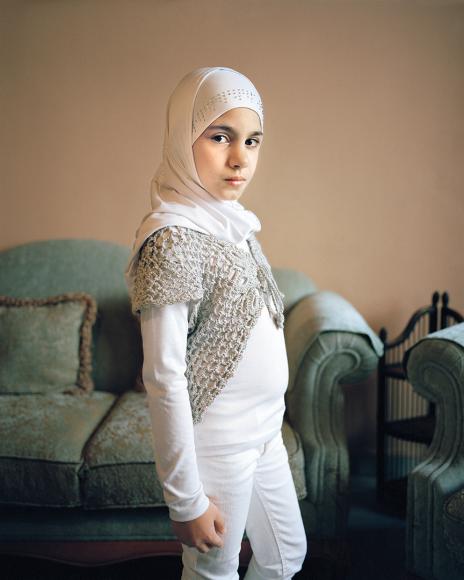Picturing Women’s Lives, From Beirut To Boston, Girl To Mother
ArtandSeek.net February 2, 2018 19Photographer Rania Matar makes series of portraits – young girls posing, teenagers in their bedrooms, mothers with their daughters. Her subjects all live in Lebanon, where Matar grew up, or in Massachusetts, where she lives now. And, for the first time, these series have been combined into a single exhibition, on now at the Amon Carter Museum of American Art. For this week’s State of the Arts conversation, I sat down with Matar, who told me the women and girls she photographs have more in common than you might think.
You can click above to listen to our conversation, which aired on KERA FM. Here are some excerpts:

“Benedicte and Laeticia, Cambridge, Massachusetts,” by Rania Matar
You’ve moved from photographing young girls to adolescents to mothers and their daughters – the whole life cycle of women. What is it that attracts you to that?
Ironically, I started with the adolescents before the prepubescent girls, just because I was fascinated with my teenage daughter when she was 15, and I started this whole project.
And then as I was getting done with this work, my younger daughter who was 12, she was a late bloomer. Her body was changing and her whole demeanor and attitude was changing at the same time. And I realized that it is such a fleeting moment. And I became interested in photographing it.
The mothers and daughters happened because again, when my older daughter left to go to college, I realized that, up to that point, I thought I’m also 25 years old. And then when she left, it kind of made me realize that as she’s leaving home, my role as a mother was about to change. And it hit me that now I’m a middle aged woman.
What was beautiful about the exhibition is, it is the first time it was all presented together as one project, and that made me realize that it’s all about basically, womanhood.
What have you learned from these series?
First is all these girls, even the ones who looked like they were tough and had an attitude, were so vulnerable and so approachable. And they probably were awful to their mothers, but I could see the beauty in each and every one of them. And it made me understand my kids so much better. So that was something interesting that happened.
The other thing is, I was starting this project in the United States. And I realized that I was exactly those girls, 25 years earlier, in a different country and a different culture. But that universality hit me then. Even though every single person is an individual, we are all, as women, going through the same changes. So this became consistent in the rest of my work, where I kind of owned up to it, that this is my identity. I’m from both cultures. It’s important for me to photograph both.

Rania Matar at Amon Carter Museum of American Art
It’s interesting how similar the girls seem and it can be difficult to tell whether they are in Massachusetts or in Lebanon.
I mean, some of the differences are not between the Middle East and the US. A girl in Beirut, in a nice area of Beirut, and a girl in a refugee camp were very different. But a girl in a suburb of Beirut or a suburb of Boston, sometimes you can’t tell the difference. And it became important to me to focus on that.
You often ask your subjects not to smile. Why is that?
You know, I think we’re programmed , especially in this country, more than in the Middle East, to as soon as the camera goes up, you smile for the camera. But that’s what people want to give you. And I’m trying to get beyond that.

“Andrea, Beirut, Lebanon,” by Rania Matar.
When people are not smiling, there’s so much more that’s there. I’m not going after the deadpan face. I’m trying to see the emotions that you can see when somebody’s not smiling. And when people don’t smile, they start thinking about what they do with their bodies and their arms and their hands. And you see a lot of their identity expressed a certain way.
I’m trying to get something more than what they’re willing to give me intentionally.

“Maryam, 9, Beirut, Lebanon,” by Rania Matar
How do you choose your subjects?
I realized early on that I work much better with people I do not know. With people I know, they’re more self-conscious. And I get more self-conscious.
Once I realized that, it was almost liberating. And I started stopping people everywhere. And I had a whole system about how I went about it. For one, I’m little and I’m not too scary looking. And often I would have my daughters with me. So it made things a little easier.
I don’t know how I pick people, but there’s something about somebody I would see, from the corner of my eye, and I would be like “Oh my God, I need to photograph her.” It got to the point where I would be with my family, and they could tell. And they were like, “Oh no. Please, no.” And I was like, “yes!”
And I would say 95 percent of the time, it works.

“Molly, 12, Brookline, Massachusetts,” By Rania Matar.









